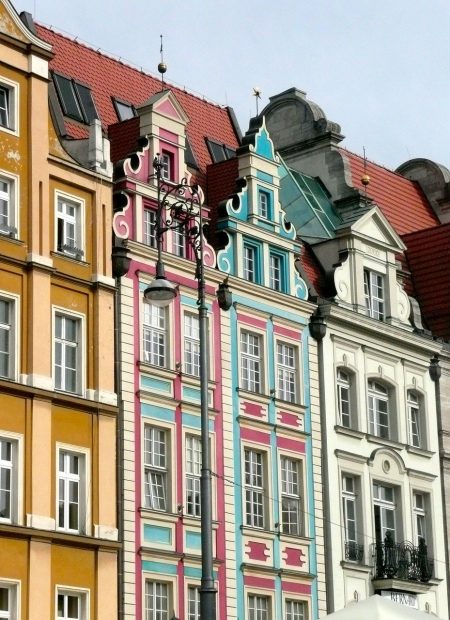
Overtourism: What’s the Solution?
The global tourism boom isn’t slowing down. What can we do as travellers do to keep things in balance and minimise our impact?
What is Overtourism?
The term “overtourism” – too many tourists – is something we’ve touched on briefly many times at Discoveny. It’s an umbrella term that describes the many side effects that mass tourism can create.
The negative effects of too many tourists have been thrust into the spotlight. Exasperated locals in popular tourist destinations, such as Venice, Amsterdam, and Barcelona, are fed-up of dealing with the environmental, societal and political consequences of happy holiday makers. The phenomenon is global and has even reached places once thought of as ‘remote’, such as Iceland and the Scottish Isle of Skye. ‘Tick-box tourists’ have been urged to slow down and see more, instead of trying to cram their visit into a matter of hours.
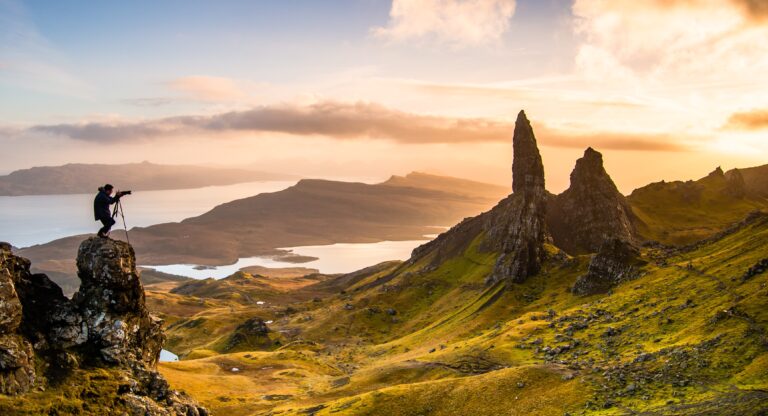
Why is it a problem?
Isn’t tourism a good thing? Well, sort of. Tourism can be extremely beneficial: it can help build economies, create jobs, encourage conservation, and encourage the restoration and preservation of historic sites.
In the short-term, floods of tourists can bring much-needed economic relief to a city. Businesses begin catering to sightseers with cash to splash. Hotels pop up. Property values increase. Locals can let out their rooms on AirBnB for a little extra income.
But when does such a fast-rising tide become an unacceptable tsunami?
Fast-growing mass travel poses real threats to natural and cultural heritage sites. The ancient infrastructure of beautiful historic cities and monuments wasn’t made to withstand such an influx of tourists. Wear and tear on natural areas of beauty is another issue. Local people experience cultural and economic disruption as property values soar and many are driven out of the city centres they once called home. And overall, you, the visitor receive a degraded experience.
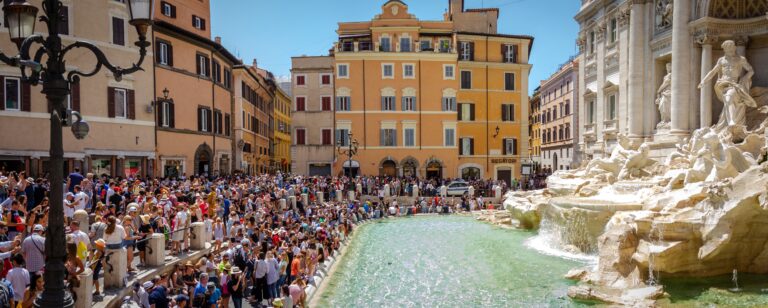
What causes overtourism?
There are many causes of overtourism. AirBnB has been heavily used as a scapegoat by city councils and the media. As the ‘home share’ concept becomes more familiar, there has been a demand for cheaper holiday apartments or rooms which AirBnb happily provides. And it’s this demand that means that rents are pushed up, and local people are pushed out.
But it is the rise in availability of budget flights, which have saturated Europe in particular, that is mostly to blame. Subsidies and tax relief for the aviation industry make it cheaper to fly from London to Barcelona, than to take a train from London to Edinburgh, and it’s faster too. It’s no wonder budget-savvy travellers choose to go abroad to one of these popular cities for a weekend city-break. This has long-term consequences for these cities, and the future of climate change.
Cruise ships are also a very real problem, flooding port cities, such as Venice and Dubrovnik, with thousands of visitors each day. These passengers often spend very little in the city, choosing to eat dinner and organise tours through their cruise operator. Yet they ensure that historic streets, monuments, cafes and shops are rammed with people, creating an unpleasant experience for residents as well as for visitors who may be staying on land and spending money locally.
Social media has a big impact too! Cities ‘go viral’ in the same way videos, tweets and pictures do. Social media ‘influencers’ with large followings can have a very negative effect on beautiful places that just can’t deal with huge numbers of visitors every day. That’s why when we find a true hidden gem here at Discoveny, we keep it to ourselves.

There are industry solutions to overtourism...
Pressure for change is coming less from tourists than from locals, and solutions require individuals, cities, the media and industries to co-operate. I’ll dig into what we, as individual tourists can do shortly, but for now, let’s look at travel industry solutions.
Barcelona, one of the world’s busiest cruise docks, is enforcing tighter controls on short-term apartment rentals, hotel development. Venice has banned cruise ships from docking at all. Italy’s Cinque Terre has put limits on hikers. Amsterdam is focusing on tourist redistribution techniques. Governments have even closed entire islands across Thailand, Indonesia and the Philippines to allow the overtrodden environment to recover from the onslaught of visitors.
Here are other things that the industry can do:
Limiting transportation options. Placing limits on the amount of flights or cruise ships that can land/dock each day can allow a place to directly control the amount of tourists that are entering at once. This stops a location becoming overwhelmed.
Introducing a tourist tax. Many countries around the world, like Bhutan and Spain, have already implemented this solution. Taxes added onto hotel bills or paid as an exit fee at the airport can be used to protect natural resources and develop tourism facilities.
Restricting time spent at popular sites. Another tactic is to restrict the number of ticket slots for popular sites and limit the amount of time visitors can spend there. This has been used already at famous sites like Machu Picchu in Peru.
Improving marketing and education. This is important! Marketing efforts should embrace a larger scope instead of just focussing on one city/region. This makes sure tourists and income is distributed across lesser-travelled regions too.

How can you be a responsible tourist?
Responsible tourism refers to tourism that creates better places for people to live and to visit. Tourists should ideally improve the lives of those who live and work in the city, or at the very least leave no impact at all.
Put simply, overtourism is when the number of visitors exceeds that which a location can deal with. If you turn up and it’s super crowded, there’s not much you can do. But a little planning before your trip can stop you from contributing to overtourism and even improve your experience.
There are two things to think about. The place. And the time.
The Place
Although Spain, Italy, Iceland and Croatia are all frequently held up as examples of overtourism, this is often extremely localised. Barcelona may be full to bursting, and many of the residents are tired of tourists. But Spain is a surprisingly big country. If you’re craving some Spanish sun, why not head to equally beautiful but significantly less popular cities? Or hire a car and drive into the mountain pueblos where you’ll be welcomed as one of the few tourists who make it that far. There are many places around the globe that need and want more tourist income.
Once you’ve picked a destination, think about how and where you’ll spend your money. When you arrive in a place, you become part of that place. How you travel, where you go, what you see and where you rest your head at night: it all has an impact. Try to stay in local-owned accommodation, support authentic artisans when you buy your souvenirs and stay away from the restaurants catering to tourists en masse and opt for something more unique instead.
Of course, if you really want to visit La Sagrada Familia and queue for that dreamy picture at Park Güell then you’ll have to head to Barcelona. But there are still ways you can minimise your impact…
The Time
If you know you’re heading to a popular location, think about when you go. Visiting outside of peak season will put less pressure on public transport and famous heritage sites. It’ll be more pleasant for you and maybe even cheaper too! When you’re there, hit museums and sights early, before crowds arrive.

Here are other things you can do to be a more responsible tourist:
Avoid mainstream and/or iconic destinations. It’s not easy to skip the famous landmark spots. The social-media-induced FOMO is real. But I promise you that there are plenty of amazing landmarks that haven’t got the attention they deserve. Choose underrated destinations or opt for off-the-beaten-track adventures.
Make “second city” tourism a habit. If you can’t bear to skip the landmarks, why not curb your impact by visiting another lesser-known city in the region. Adopting this habit can reduce your impact and also bring income to lesser-known places.
Be a slow traveller. Slow travel aims for quantity over quality. The well-trodden highlights often barely brush the surface of a much deeper cultural experience. Spending a few extra days at every stop means you can really engage with the communities you visit and help the economy by frequenting more local and independent businesses.
Ask before you take photos. Taking photos of locals and their cultural traditions can be intrusive, and lead to the commodification of cultural practices. If you want to take pictures of/with locals, it’s best to ask for their consent first.
Cultural appreciation not appropriation. It’s a fine line to walk (and we’ve got more coming on this later). Take the time to learn about and truly appreciate a culture before you borrow, adopt or purchase elements of that culture. If you’re unsure, ask yourself who benefits from your actions: you or the community?
Stay local! Stay in local-owned accommodation if you can. Or better yet, try couchsurfing, a cultural exchange for both you and your host that will see you discovering the real hidden gems of a city.
Travel can be a wonderful force for change, growth, learning and supporting economies that need visitor income. We hope that you’ll take keep these thoughts in mind for your next trip and consider how you can avoid contributing to the negative effects of overtourism.
Disclaimer: The information and advice provided in this blog are the author’s opinions and based on their personal experiences. All information was accurate at the time of writing. However, things can change quickly, so always double-check current conditions and guidelines before setting out. Remember, your travels and safety are your own responsibility, and this blog can not be held responsible for anything that might happen on your adventures! Always exercise caution and good judgment. Oh, and don’t forget to get travel insurance! Happy travels!
This post may contain affiliate links (yay for transparency!) This means that I will earn a small commission, at no additional cost to you, if you click the link and choose to buy the product. I only link to stuff I have personally bought and found useful and never endorse crap. Your support helps keep the site going, thank you!
Alice
Alice is a UK travel blogger who advocates sustainable travel and being more eco-conscious on a budget. She loves coffee, her houseplants and summiting mountains.
You May Also Like
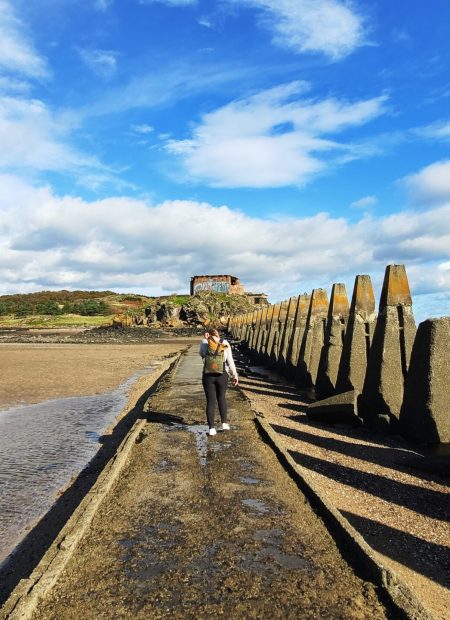
Cycle to Cramond | Edinburgh things to do 2025
October 17, 2020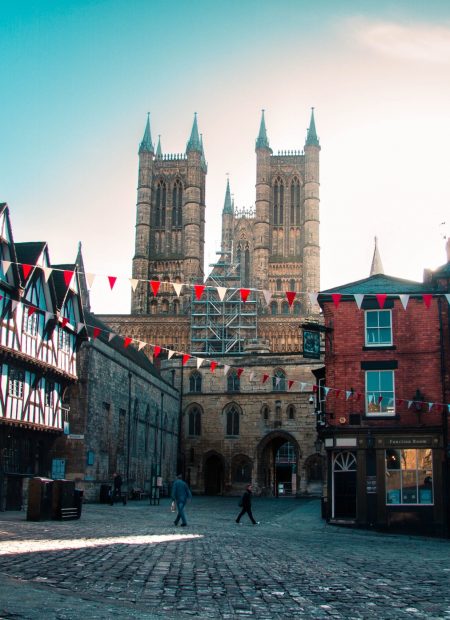
A Local’s Guide to Lincoln
September 19, 2020